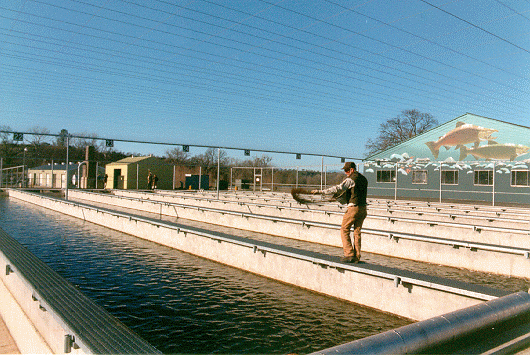NorCal Hatchery Struggling To Produce Chinook

With the holidays and an extremely busy schedule I had last week, I missed posting a fine report from the Sacramento Bee’s Ryan Sabalow on the U.S. Fish and Wildlife Service’s Coleman National Fish Hatchery’s woes:
Here’s Sabalow with more:
The federal Coleman National Fish Hatchery tries to produce about 12 million fall-run Chinook salmon for release each spring into Battle Creek, a Sacramento River tributary south of Redding. This spring, the Coleman hatchery will only have half as many young salmon to release.
The reason harkens back to the abysmal river conditions in the heart of California’s historic five-year drought – and the choices fishery managers made those years to move the baby Chinook by tanker truck out to sea in a frantic effort to save the commercially important fish.
They knew at the time trucking the fish would lead to fewer fish coming back to Coleman this year to spawn.
“Everybody kind of acknowledged and understood at the time the consequences,” said John McManus, executive director of the Golden Gate Salmon Association, a fishing advocacy group.
Chinook live two or three years in the Pacific Ocean before adult fish head back upriver to lay their eggs and die, starting the cycle anew. Fish hatched in California’s five-year drought that ended officially in the spring are returning to Central Valley rivers this year.
Almost all of the Central Valley’s fall-run Chinook are hatched from eggs and sperm that biologists harvest from adults that return to hatcheries below the dams blocking the fish from their traditional spawning habitat.
Fall-run adult fish – raised at five hatcheries across the Central Valley – provide the bulk of the fish caught in the commercial and recreational fishing industry. McManus and other fishing advocates say fall-run Chinook support $1.4 billion in annual economic activity in California and about 23,000 fishing related jobs while providing locally caught fish for Californians’ dinner tables.



